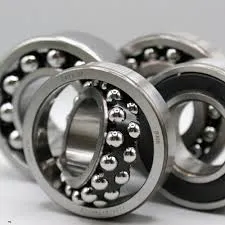
11 月 . 04, 2024 08:44 Back to list
6217 bearing dimensions
Understanding 6217 Bearing Dimensions
Bearings play a crucial role in various mechanical devices, ensuring smooth rotation and reducing friction between moving parts. One of the commonly used bearings in different applications is the 6217 bearing. Understanding the dimensions and specifications of this bearing is essential for engineers and designers who aim to optimize performance and enhance the lifespan of machinery.
Understanding 6217 Bearing Dimensions
For the 6217 bearing, its dimensions are standardized as follows - Inner Diameter (ID) 85 mm - Outer Diameter (OD) 150 mm - Width 28 mm
6217 bearing dimensions

These measurements tell us that the inner diameter (where the shaft fits) is 85 mm, while the outer diameter measures 150 mm. The width of the bearing is 28 mm. These specifications ensure that the bearing can fit into corresponding housings and provide adequate space for lubrication, which is vital for reducing wear and tear during operation.
The 6217 bearing is typically made from high-carbon chromium steel, which provides excellent hardness and wear resistance. Some variants may be made from stainless steel or hybrid materials, which can offer better corrosion resistance and longevity, depending on the specific application. It is essential to choose the right material based on the operating environment, whether it involves high temperatures, exposure to moisture, or contamination risks.
In terms of performance, the 6217 bearing can operate at high speeds and under moderate to heavy loads, making it suitable for applications such as electric motors, industrial machinery, and automotive components. Additionally, the bearing is available in various designs, including open, sealed, and shielded configurations. Sealed and shielded bearings are often preferred in environments where contamination is a concern, as they help retain lubrication and block debris.
In summary, the 6217 bearing is a robust and versatile choice for many mechanical applications. Its standardized dimensions, material properties, and design variations allow engineers to select it for different operating conditions. Understanding these specifications not only aids in selecting the right bearing but also enhances overall equipment performance and reliability, ultimately leading to greater operational efficiency and reduced maintenance costs.
Latest news
-
Unlocking Efficiency with Spherical Roller Bearings
NewsOct.29,2024
-
The Ultimate Guide to Thrust Ball Bearings
NewsOct.29,2024
-
The Power of Thrust Roller Bearings: Engineered for Excellence
NewsOct.29,2024
-
The Power of Deep Groove Ball Bearings for Your Application Needs!
NewsOct.29,2024
-
The Power and Performance of Cylindrical Roller Bearings
NewsOct.29,2024
-
High-Quality Ball Bearing Manufacturing Machines
NewsOct.29,2024
